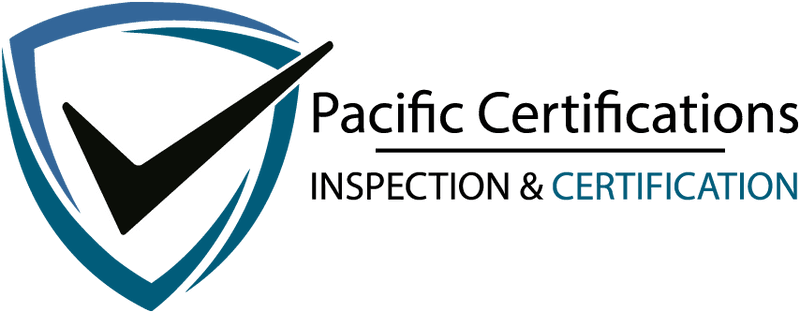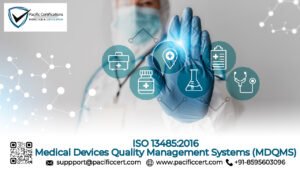What is EN 149:2001+A1:2009 – Respiratory Protective Devices – Filtering half masks to protect against particles – Requirements, testing, marking?
EN 149 is a European standard that specifies the requirements, testing methods, and marking for filtering half masks used as respiratory protective devices to protect against particles. Here’s an overview of EN 149:
Scope: EN 149 applies to filtering half masks that cover the nose, mouth, and chin and are designed to protect against particles in the air. It includes both valved and non-valved half masks. The standard does not cover masks for use in environments with hazardous gases or vapors.
Classification of filtering half masks: EN 149 classifies filtering half masks into three categories based on their filtering efficiency:
- FFP1 (Filtering Face Piece 1): These masks provide the lowest level of protection, with a minimum filtration efficiency of 80% against particles.
- FFP2 (Filtering Face Piece 2): FFP2 masks offer a higher level of protection, with a minimum filtration efficiency of 94% against particles.
- FFP3 (Filtering Face Piece 3): FFP3 masks provide the highest level of protection, with a minimum filtration efficiency of 99% against particles
Requirements for Filtering Half Masks
EN 149 sets out various requirements that filtering half masks must meet, including:
Particle filtration efficiency: Masks must achieve the minimum filtration efficiency specified for their category (FFP1, FFP2, or FFP3)
Breathing resistance: Masks should have low breathing resistance to ensure comfort during use.
Leakage: Masks must have a proper seal to minimize inward leakage of particles
Inhalation and exhalation valves (for valved masks): If present, valves must meet specific requirements to maintain the intended level of protection
Testing methods: The standard outlines testing methods to evaluate the performance of filtering half masks. These include tests for filtration efficiency, breathing resistance, practical performance (e.g., fitting and field of vision), and compatibility with other personal protective equipment.
Marking and identification: EN 149 specifies the required marking and identification information that should be present on the filtering half masks. This includes the manufacturer’s name or trademark, the mask’s classification (FFP1, FFP2, FFP3), the conformity marking, and any additional information as required by the standard.
Furthermore, EN 149 is an important standard that ensures the quality and performance of filtering half masks used for respiratory protection against particles. Compliance with this standard provides confidence to users that the masks meet specific requirements and offer the intended level of protection.
Requirements of EN 149 – Respiratory protective devices
Filtering efficiency: EN 149 sets minimum requirements for the filtration efficiency of filtering half masks. The masks are classified into three categories: FFP1, FFP2, and FFP3, with increasing levels of filtration efficiency.
The Minimum Filtration efficiencies for these categories are as follows:
- FFP1: ≥ 80%
- FFP2: ≥ 94%
- FFP3: ≥ 99%
Breathing Resistance: The standard specifies limits for the breathing resistance of filtering half masks. Masks should provide low resistance to breathing to ensure comfort during use
Inward Leakage: EN 149 mandates that filtering half masks should have a proper seal to minimize inward leakage of particles. This ensures that the masks provide effective protection.
Inhalation and Exhalation Valves (for valved masks): If the filtering half mask includes inhalation and/or exhalation valves, the standard sets requirements for their performance. These valves should not affect the intended level of protection provided by the mask.
Compatibility with other Personal Protective Equipment (PPE): If the filtering half mask is intended to be used in conjunction with other PPE, EN 149 specifies requirements for ensuring compatibility and proper integration with other protective equipment.
Testing Methods: The standard outlines testing methods to assess the compliance of filtering half masks with the specified requirements. These tests include evaluating filtration efficiency, breathing resistance, practical performance (e.g., fitting and field of vision), and compatibility with other PPE.
Marking and Identification: EN 149 provides guidelines for the required marking and identification information to be present on the filtering half masks. The markings include the manufacturer’s name or trademark, the classification of the mask (FFP1, FFP2, FFP3), the conformity marking (CE mark), and any additional information as required by the standard.
Therefore, compliance with EN 149 ensures that filtering half masks meet specific quality and performance requirements, offering reliable respiratory protection against particles. It enables users to identify suitable masks based on their filtration efficiency and provides assurance of the masks’ conformity with the standard.
Document checklist for EN 149 – Respiratory Protective Devices
Technical File: Prepare a technical file that contains all relevant technical documentation, including test reports, product specifications, design drawings, manufacturing processes, and quality control procedures.
Declaration of Conformity: Issue a declaration of conformity stating that the filtering half masks comply with the requirements of EN 149. This document should be signed and dated by the authorized person representing the manufacturer or supplier.
Product Labeling: Ensure that the filtering half masks are appropriately labeled with the required information. This includes the manufacturer’s name or trademark, mask classification (FFP1, FFP2, FFP3), CE mark, batch or serial number, and any additional information as specified by the standard.
User Instructions: Prepare clear and comprehensive user instructions for the filtering half masks. These instructions should cover proper usage, fitting, maintenance, storage, and disposal of the masks. Include any relevant warnings and precautions.
Test Reports: Obtain test reports from a recognized testing laboratory that demonstrate compliance with the requirements of EN 149. These reports should cover filtration efficiency, breathing resistance, practical performance, and any other relevant testing parameters.
Risk Assessment: Conduct a risk assessment for the filtering half masks, identifying and evaluating potential hazards and risks associated with their use. Document the risk assessment findings and include appropriate measures to mitigate identified risks.
Quality Management System: Implement and document a quality management system that ensures consistent manufacturing processes, traceability of materials and components, and adherence to relevant standards and regulations. This may include procedures for incoming inspections, production control, and final product testing.
Supplier Documentation: If the filtering half masks incorporate components or materials supplied by external parties, obtain relevant documentation from these suppliers, such as material specifications, test reports, and certificates of conformity.
Maintenance and Service Instructions: If applicable, provide instructions for maintenance and service of the filtering half masks, including recommendations for cleaning, disinfection, and replacement of components.
Record Keeping: Maintain records of all relevant documentation, including test reports, inspections, and product complaints. These records should be easily accessible for future reference.
What are the Benefits of EN 149
Reliable Protection: EN 149 ensures that filtering half masks provide reliable protection against particles in the air. The standard sets minimum requirements for filtration efficiency, ensuring that the masks effectively filter out airborne particles and contaminants, thus safeguarding the respiratory health of the wearer.
Quality Assurance: Compliance with EN 149 provides assurance of product quality. By adhering to the standard’s requirements, manufacturers and suppliers can demonstrate that their filtering half masks meet specific performance and safety standards. This instills confidence in the reliability and effectiveness of the products.
Improved Occupational Safety: The standard contributes to improving occupational safety by promoting the use of properly tested and certified respiratory protective devices. When filtering half masks comply with EN 149, employers can provide their workers with reliable protection, minimizing the risk of respiratory-related occupational illnesses and injuries.
Standardized Testing: EN 149 establishes standardized testing methods, ensuring consistency and comparability in evaluating the performance of filtering half masks. By following these testing procedures, manufacturers can assess and demonstrate the performance characteristics of their products uniformly, enabling fair comparisons and informed decision-making for end-users.
Clear Marking and Identification: The standard specifies guidelines for marking and identifying filtering half masks. This facilitates easy identification of product classification (FFP1, FFP2, FFP3) and ensures that necessary information, such as the manufacturer’s name, batch or serial number, and CE mark, is clearly displayed on the product. Clear marking enhances traceability and enables users to select appropriate masks for their specific needs.
Compliance with Regulations: EN 149 is a harmonized European standard that aligns with the requirements of the Personal Protective Equipment (PPE) Directive (EU) 2016/425. By complying with EN 149, manufacturers and suppliers can meet the legal obligations for placing respiratory protective devices on the European market, ensuring regulatory compliance.
Increased Confidence and Trust: Compliance with EN 149 builds confidence and trust among users, buyers, and regulatory authorities. When filtering half masks meet the standard’s requirements and bear the CE mark, users can trust that the products have undergone proper testing and assessment, offering the specified level of respiratory protection.
International Recognition: While EN 149 is a European standard, its importance extends beyond Europe. Many countries and regions around the world recognize the value and significance of this standard. Compliance with EN 149 can facilitate market access and acceptance in international markets, expanding business opportunities for manufacturers and suppliers.
Overall, EN 149 plays a vital role in promoting the quality, performance, and safety of respiratory protective devices. Compliance with this standard helps protect the respiratory health of workers, enhances workplace safety, and enables users to make informed decisions when selecting appropriate filtering half masks.
Who needs EN 149 – Respiratory Protective Devices?
EN 149 is relevant to various stakeholders involved in the manufacturing, distribution, and use of respiratory protective devices.
Here are the key parties that need to consider and comply with the standard:
Manufacturers: Manufacturers of filtering half masks designed to protect against particles need to adhere to EN 149. They are responsible for ensuring that their products meet the requirements specified in the standard. Compliance allows manufacturers to demonstrate the quality, performance, and safety of their products, instilling confidence in customers and end-users.
Suppliers and Distributors: Suppliers and distributors of respiratory protective devices, including filtering half masks, should ensure that the products they provide comply with EN 149. They play a crucial role in verifying that the masks they offer meet the necessary standards and are properly marked and labeled. Compliance ensures that the products they supply are safe and reliable for customers.
Employers and Occupational Safety Professionals: Employers have a responsibility to provide a safe working environment for their employees, including appropriate respiratory protection when needed. Compliance with EN 149 assists employers in selecting and procuring filtering half masks that meet the necessary standards for protecting workers against particles. Occupational safety professionals can also use EN 149 as a reference to ensure compliance with respiratory protection regulations.
Workers: Workers who are exposed to airborne particles in their work environments rely on respiratory protective devices for their safety. By using filtering half masks that conform to EN 149, workers can have confidence in the effectiveness of their respiratory protection. They can trust that the masks have undergone proper testing and meet the required standards for particle filtration.
Regulatory Authorities: Regulatory authorities responsible for overseeing workplace safety, personal protective equipment (PPE) regulations, and health and safety standards may refer to EN 149 as a recognized standard. Compliance with EN 149 facilitates regulatory compliance and ensures that respiratory protective devices meet the necessary requirements for market access and distribution.
Certification Bodies and Testing Laboratories: Certification bodies and testing laboratories play a crucial role in evaluating and certifying respiratory protective devices, including filtering half masks. They utilize EN 149 as a reference for conducting testing and assessing compliance. Compliance with the standard allows certification bodies and testing laboratories to verify the performance and safety of the products and issue the necessary certifications or test reports.
Overall, EN 149 is primarily relevant to the European market, its principles and requirements can also be considered by stakeholders in other regions who aim to ensure the quality and safety of respiratory protective devices.
Lastly, If you need more support with EN 149 please contact us at +91-8595603096 or support@pacificcert.com
Read About : BS EN 13795-1:2019 Surgical clothing and drapes







